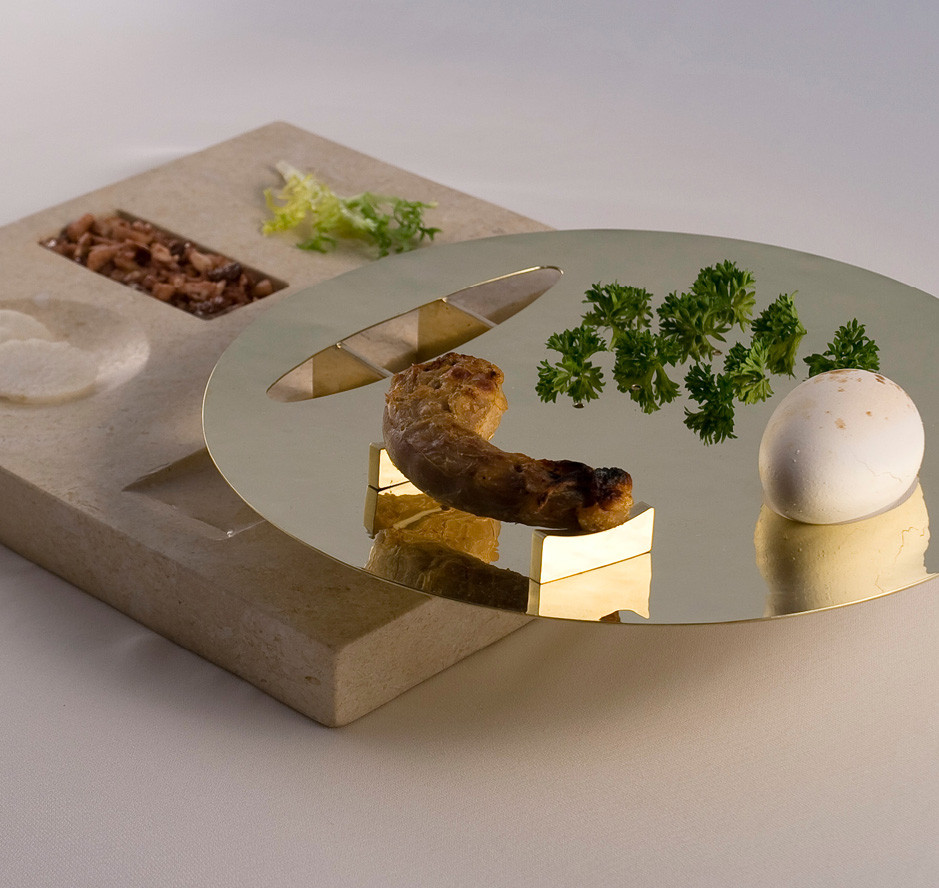For the Home
- MIDNIGHT MENORAH
- WATER BLOSSOM MENORAH
- KIDDUSH CUP FOR MIRIAM
- CHALLAH BOARD
- FLOWER CANDLESTICKS
- KIDDUSH CUP
- JML Menorah
- MEZZUZAHS, CUSTOM
- MEZZUZAH: GLOBE
- MEZZUZAH: 7 SPECIES
- MIRIAMS CUP I
- MIRIAMS CUP II
- SAIL CANDLESTICKS
- Seder Plate I
- Seder Plate II
- SHABBAT CANDELABRA
- Sukkah I
- Sukkah II
- TU B’SHEVAT PLATE
- TZEDAKAH BOX
- WASHING STATION
Seder Plate II
If the Passover seder is a communal drama, the seder plate is its main stage prop. Here, the central theme of Pesach--emerging from slavery into freedom--is expressed by the separation of foods representing those two states. Haroset, maror, and hazeret are 3 ritual foods meant to recall our enslavement to the Egyptians. The shank bone, egg, and the karpas remind us of our status as a free people.
The foods of slavery rest on a lower level, set into a heavy limestone slab. In stark contrast, the foods of freedom are elevated on a shimmering brass disc, evoking the higher spiritual plane of the Israelites in the desert. The element that simultaneously separates and connects these two conditions is water. Here, a channel of salt water on the seder plate points to the pivotal role of the Red Sea in the Exodus story.
- Jerusalem Gold limestone + hand-hammered brass, 12” x 20” x 4”
- Limited edition of 36
- Created for “New Works/Old Story” at the Contemporary Jewish Museum, San Francisco
- $3,600. Available at the Contemporary Jewish Museum, San Francisco, The Jewish Museum, NY, and this website.


 previous
previous